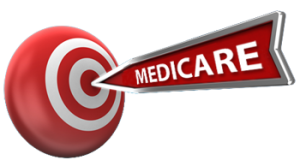Active vs Maintenance Treatment in Chiropractic
 Do you dread the “CO-50” denial from Medicare? How can it be “not medically necessary” after all, when you are simply trying to get the patient better? A keen understanding of the difference between these two kinds of care will help you understand what Medicare expects from you.
Do you dread the “CO-50” denial from Medicare? How can it be “not medically necessary” after all, when you are simply trying to get the patient better? A keen understanding of the difference between these two kinds of care will help you understand what Medicare expects from you.
What Does Medicare Cover?
Medicare doesn’t automatically cover all spinal adjustment, coded as 98940, 98941, and 98942. Active treatment, signified by the AT modifier, indicates that the treatment meets the definition of medical necessity outlined below. Treatment that seeks to prevent disease, promote health, and prolong and enhance the quality of life; or therapy that is performed to maintain or prevent deterioration of a chronic condition simply doesn’t make the AT cut.
When providing medically necessary, active spinal adjustments to a patient, you can expect the treatment to be covered when you can document how that patient’s presenting condition and subsequent treatment meet the medical necessity definitions. All other treatment is indeed “clinically appropriate” and is necessary if you say so. But this care is more likely deemed maintenance care, and the financial responsibility of the patient.
Term |
Definition |
| Medical Necessity | The patient must have a significant health problem in the form of a neuromusculoskeletal condition necessitating treatment, and the manipulative services rendered must have a direct therapeutic relationship to the patient’s condition while providing a reasonable expectation of recovery or improvement of function. |
| Acute Care | When the patient is being treated for a new injury identified by X-ray or physical exam as specified above. The chiropractic manipulation is expected to result in an improvement in, or arrest the progression of, the patient’s condition. |
| Chronic | When the patient’s condition is not expected to significantly improve or be resolved with further treatment, but the continued therapy is expected to result in some functional improvement. Once the clinical status is stable for a given condition, and no additional objective clinical improvements are expected, further manipulative treatment is considered maintenance therapy and is not covered. |
| Maintenance | A treatment plan that seeks to prevent disease, promote health, and prolong and enhance the quality of life; or therapy that is performed to maintain or prevent deterioration of a chronic condition. When further clinical improvement is not expected from continuous, ongoing care, and the chiropractic treatment is supportive rather than corrective in nature, the treatment is considered maintenance therapy. Chiropractic maintenance therapy is not considered medically reasonable or necessary under the Medicare program and is not payable. |
| Acute Exacerbation | A temporary but marked deterioration of a patient’s condition that is causing significant interference with activities of daily living due to an acute flare-up of a previously treated condition. The patient’s clinical record must specify the date of occurrence, nature of the onset, or other pertinent factors that support the medical necessity for treatment. As with an acute injury, treatment should result in an improvement of or an arrest of the deterioration in a reasonable period of time. |
| Chronic Exacerbation | Represents an acute change that is a marked deterioration of the patient’s condition and that is causing significant interference with activities of daily living. ‘Active treatment’ can only occur as long as the patient is achieving significant clinical improvement. |
This is nothing new. In fact, many commercial payers have similar language especially when providing physical therapy services. So how can you master delivering and documenting active care that supports medical necessity? Simply appending the modifier AT to every CMT service is NOT the answer. Your first stop on the road to successful reimbursement should be your Local Coverage Determinations (LCD).
This document contains the allowable diagnoses and documentation requirements outlined by Medicare for your area. Check out some of Medicare’s Documentation Requirements HERE.
Need more help? Purchase a Solution Consultation here!


I got a better overall picture of the process, the way it is supposed to go and the resources for digging deeper into those processes.





